This post may contain affiliate links, which won’t change your price but will share some commission.
Ditch the store-bought egg dye kits this Easter and make your own with ingredients found in your kitchen. A fun experiment for kids!
This post may contain affiliate links.
Easter is just around the corner. Are you going to be decorating eggs with your family?
I've been meaning to try out homemade egg dyes for Easter for years now. The kits available at stores make it so easy, but why buy them when I have a kitchen full of things that could be used as chemical-free dyes?
I knew I wanted to use purple cabbage since I had a bunch left from making this killer pizza. I thought turmeric would be sure to dye the eggs well (since it dyes everything it touches whenever I use it!), so I used that along with some black tea leaves in my second saucepan.
I also heard that dried dill worked well, so I added that to a third pan, and realized that I only had 1 tablespoon left in the house. Yikes! Part of the point of this experiment was to see what I could come up with that was hanging out around the house, so rather than head out to buy more dill. My husband suggested matcha, so I added that to the dill for the last dye.
They worked out so beautifully! My son was super excited to see how we could turn vegetables and spices into a craft in the kitchen.
He had a lot of fun watching the pans as they simmered and got more vibrant.
After an overnight stay in the containers of dye in the refrigerator, we rinsed them off, gently dried them and packed them up for his school's Easter Egg Hunt.
He was dancing around with the eggs, just so, so proud of his creations!
We only needed 6 eggs for school, but we dyed 12 total so we would have some to enjoy at home, too.
When we were adding the hard boiled eggs to the containers of dye, I accidentally dropped one on the counter and cracked it. My son was concerned about it, so I told him that it'd be fine and that we could gently crack half of our eggs for another experiment!
The cracked shell patterns turned out so great! All we did was gently tap and crack the hard boiled eggs on all sides before submerging them in the dyes.
The results were super fun - the turmeric/black tea ones worked the best. The dill/matcha were pretty good, and the cabbage was nice and light blue.
This was such a fun activity for me and my son. He loved seeing the color come out of the red cabbage leaves after they boiled. The water was bright purple, but the eggs turned a beautiful pale robin egg blue.
With how much my family loves egg salad sandwiches, I think we may just experiment with more natural dyes all year 'round!
Looking for more of our favorite egg recipes? Check out these 5-star recipes:
- Zoodle Frittata
- No Mayo Deviled Eggs
- TABLET Sandwich (Tuna Avocado Bacon Lettuce Egg Tomato)
- Roasted Veggie Bowls with Lemon-Flaxseed Vinaigrette
- Toasted Farro Grain Bowls with Roasted Winter Veggies
- Turkey-Scotch Eggs
- French-Inspired Deviled Eggs
- Grilled Niçoise Salad Flatbreads
- Charred Veggie Ciabatta Pizza with Crispy Fried Eggs + Parmesan
- French-Inspired Egg Salad Sandwiches
- Mediterranean Quiche Duo with Cucumber-Chickpea Salad
- Waffle Pulled Pork Eggs Benedict
📖 Recipe
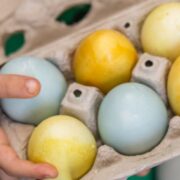
All Natural Easter Egg Dyes
- Prep Time: 10 minutes
- Cook Time: 15 minutes
- Total Time: 25 minutes
- Yield: varies
- Category: Appetizer
- Method: Stovetop
- Cuisine: American
Description
Ditch the store-bought egg dye kits this Easter and make your own with ingredients found in your kitchen. A fun experiment for kids!
Ingredients
For Pale Blue:
- ½ head of red cabbage, roughly chopped
- 4 cups water
- 3 tablespoons distilled white vinegar
For Golden Yellow:
- 1 cup water
- 1 tablespoon ground turmeric
- 1 tablespoon dried black tea leaves
- 1 tablespoon distilled white vinegar
For Pale Yellow-Green
- 1 cup water
- 1 tablespoon dried dill weed
- 1 tablespoon matcha powder
- 1 tablespoon distilled white vinegar
Instructions
- For each dye, place ingredients (except vinegar) in a saucepan. Bring to a simmer and let cook for 15 minutes. Remove from heat and let cool.
- Stir in vinegar and transfer to whatever container you're using to store them in the refrigerator while they soak. Add hard boiled eggs and cover tightly. Refrigerate, preferably overnight, until color is set.
- Remove eggs from dye, rinse and pat lightly to dry.
Notes
You can use zip-top bags to hold the dye and eggs, but I'd recommend storing the bags inside a bowl or other container so they don't leak out in the refrigerator.
If your dye doesn't quite cover the eggs, just gently shake the container occasionally to roll the eggs around while they soak. That's what I did for the gold and yellow eggs, and it gave them a fun, mottled look.

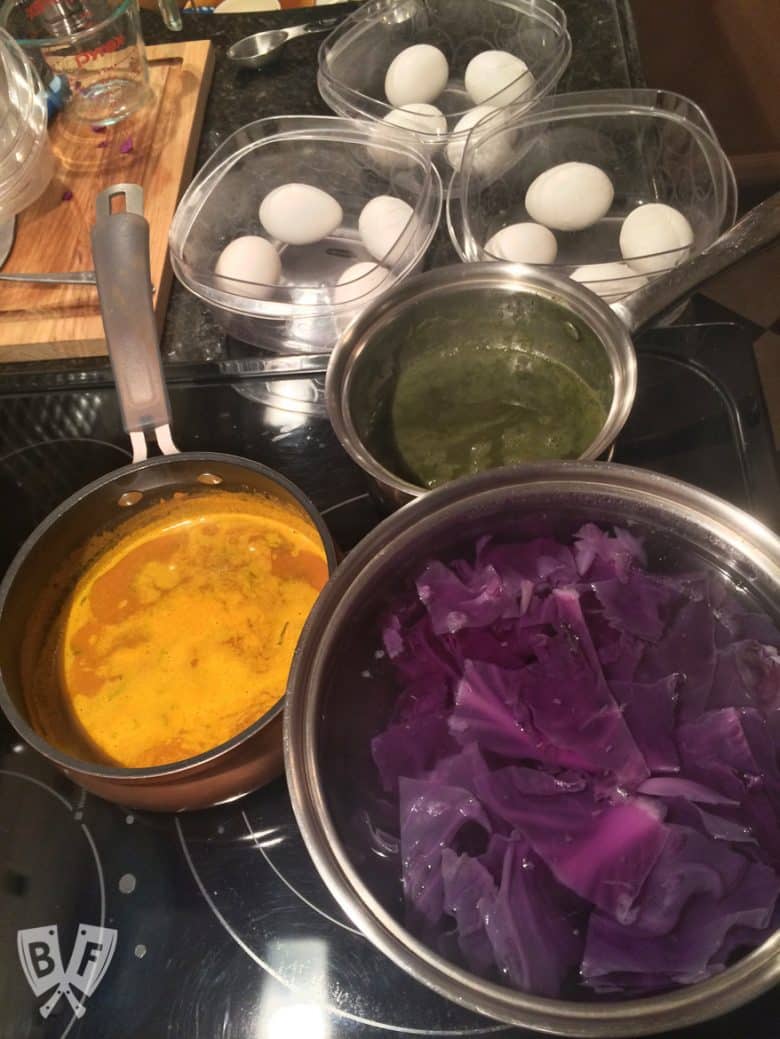

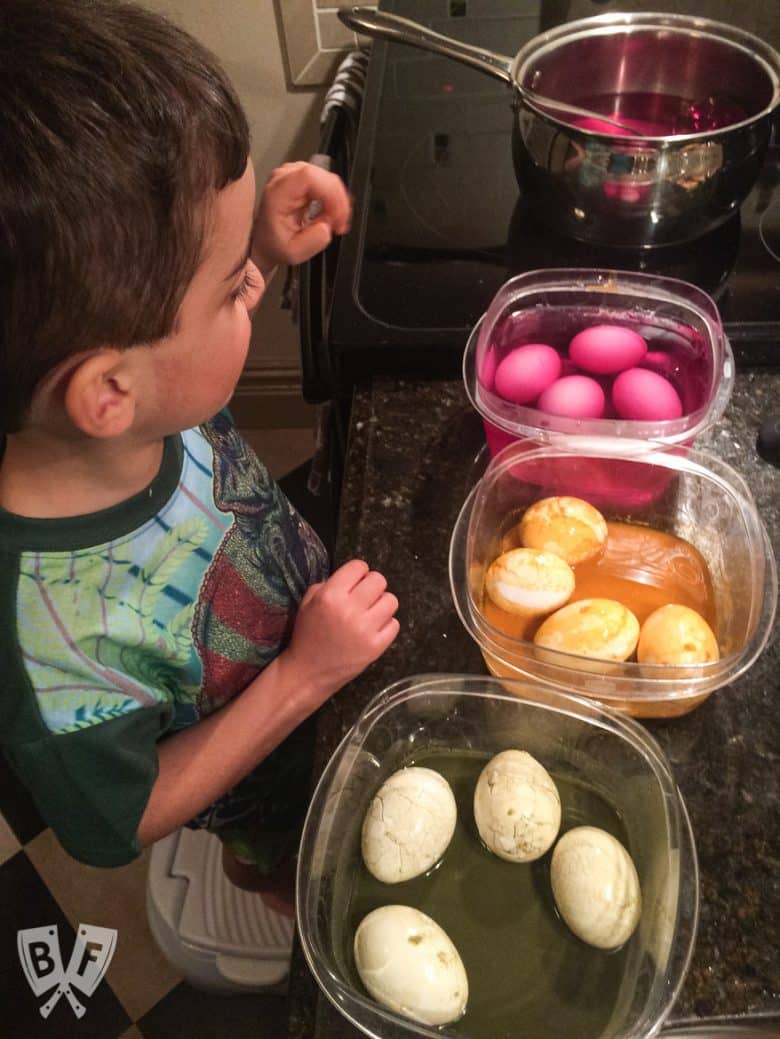
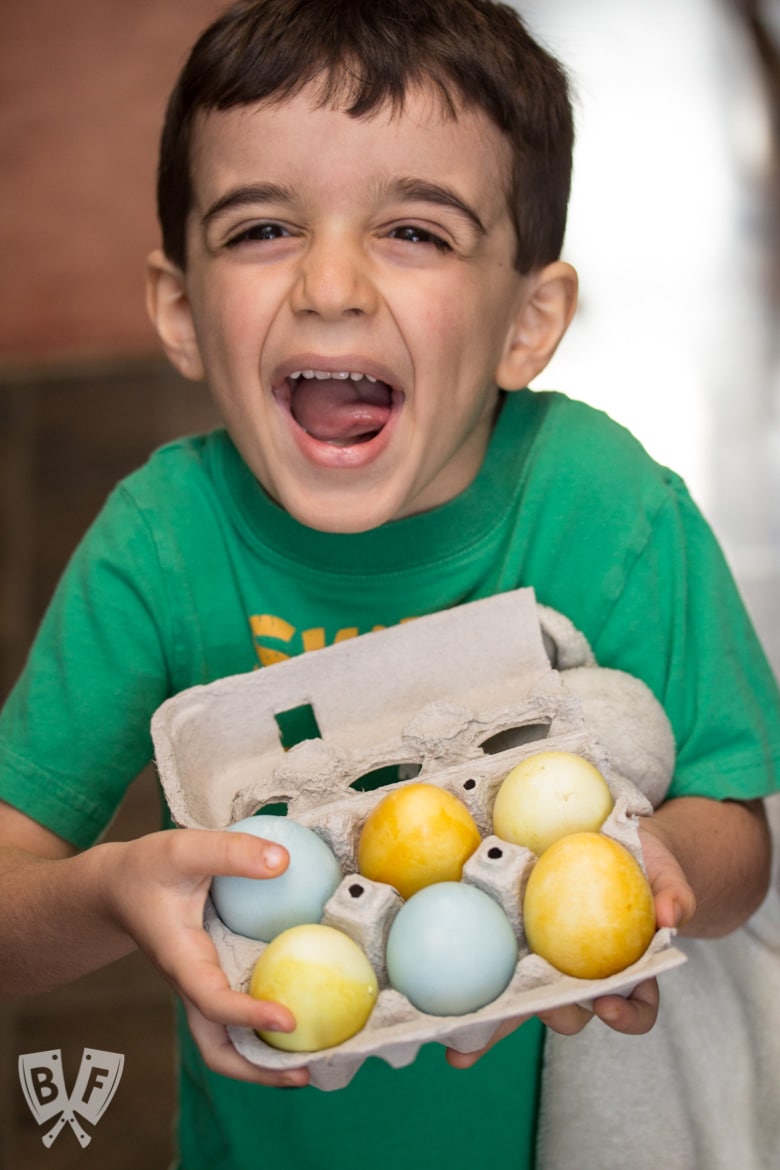
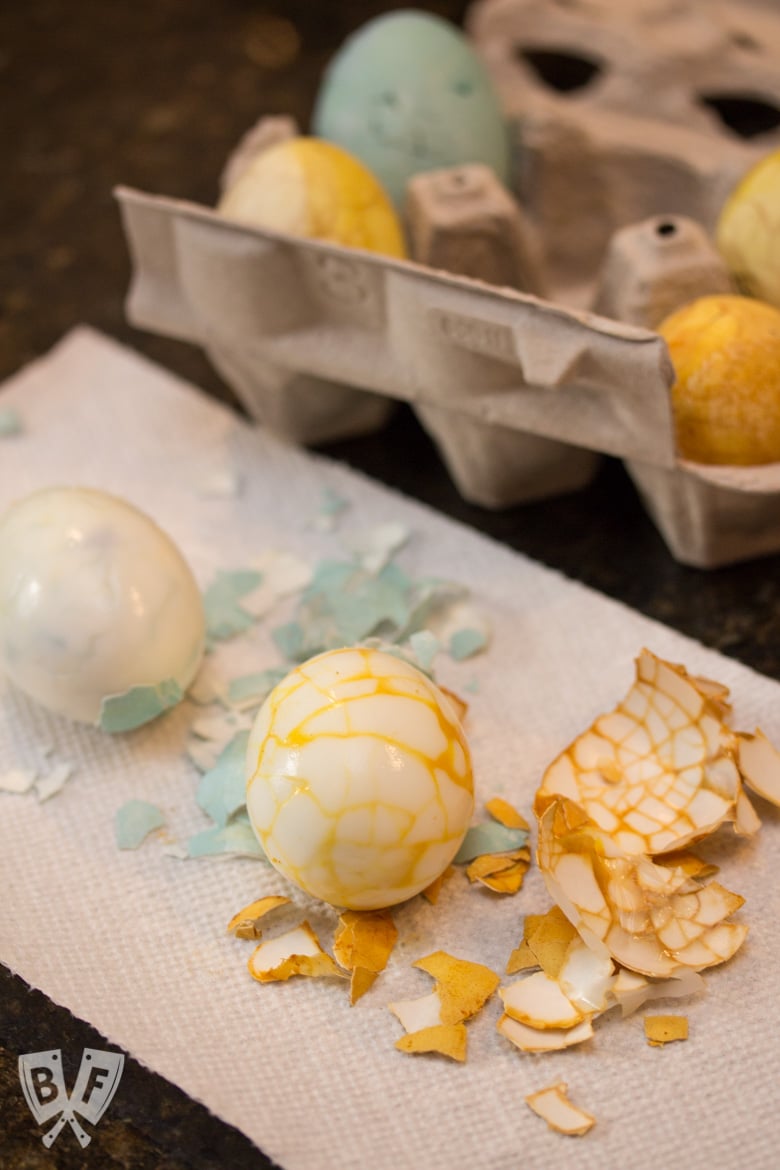
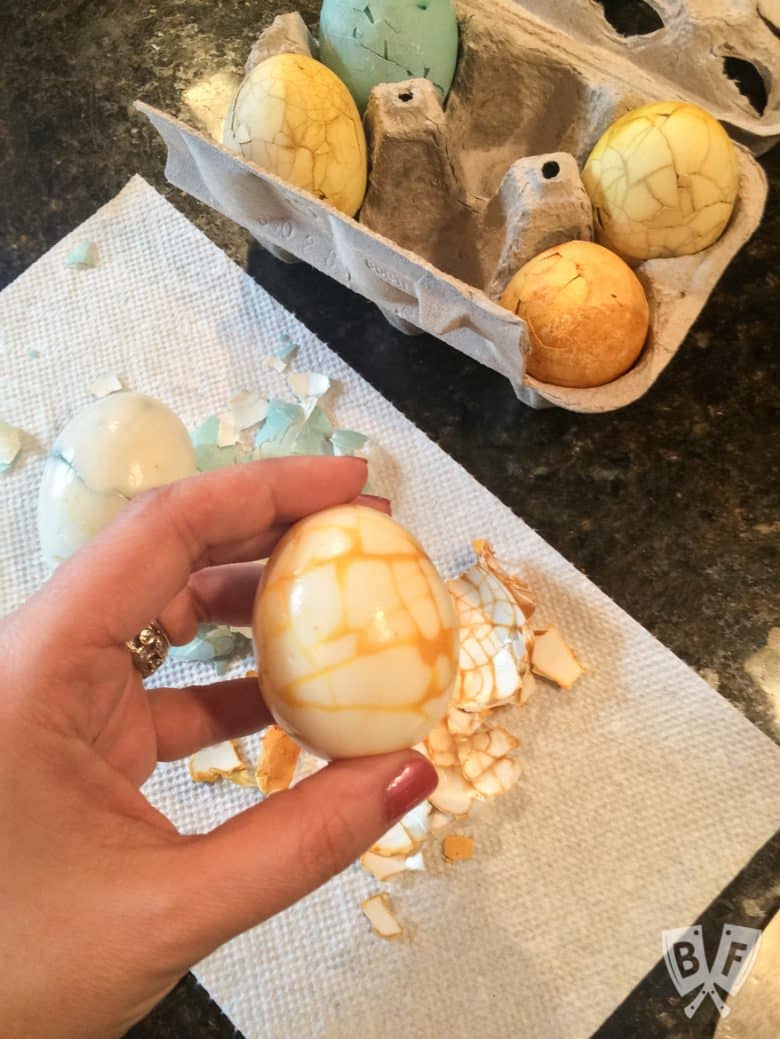
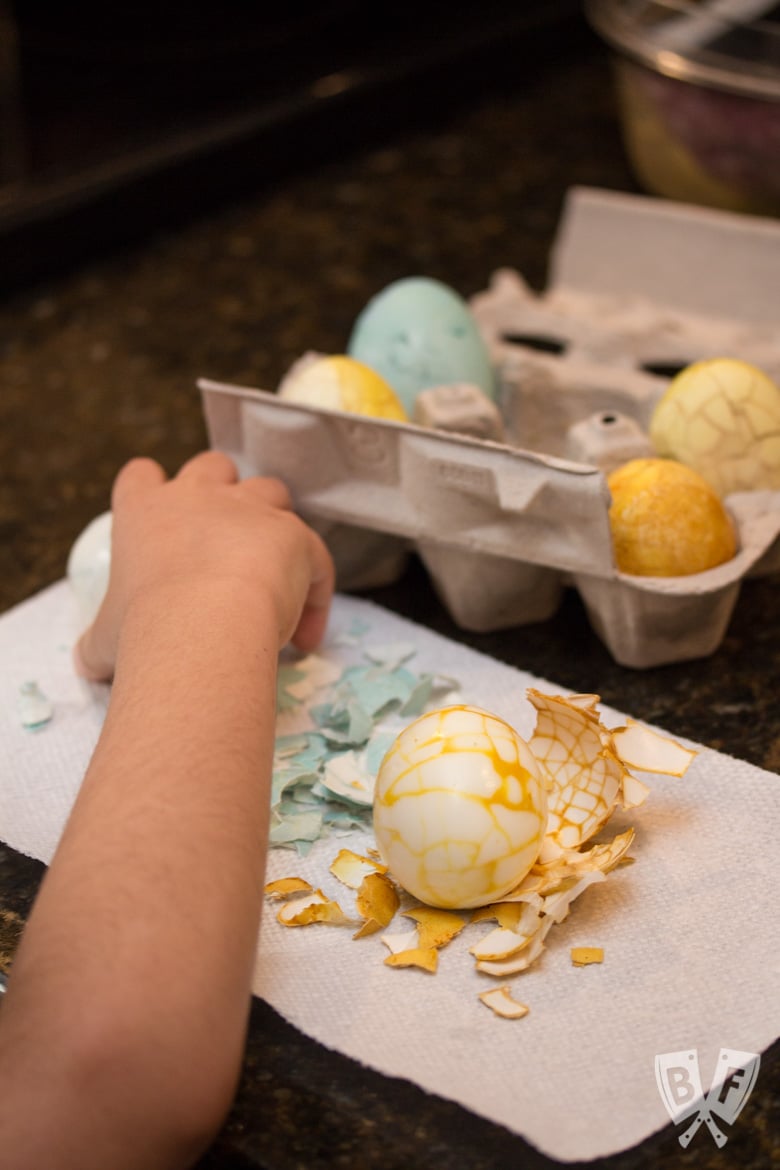



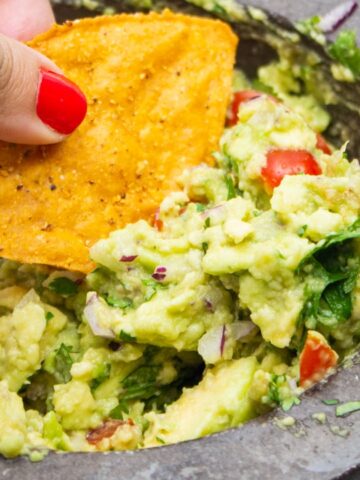


Lori H
So fun! I love how the cracked eggs turned out. It still surprises me that the purple cabbage turned out to be that shade of blue on the eggs. Go figure! 😉